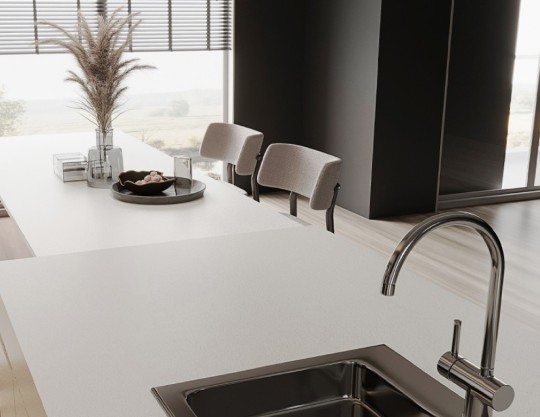Earth tones in interior design – how to use them?
References
Contemporary interior design projects are increasingly based on earth tones. Nature, with its infinite palette of colours and textures, has been a source of inspiration for centuries and continues to be so today. Magdalena Barwinek, architect and investment sales manager at Architype, mentioned the growing role of earth tones in the trends for 2025 in her article in January. Let's find out exactly what this term means!
What are earth tones?
Earth tones are shades found in nature: the colour of wet sand, clay, stone, wood or dried grass. These are low-contrast tones, devoid of intrusive vividness and unnatural shine. Examples of these colours include browns (natural wood, cinnamon, chestnut), beiges (sand, cream, off-white), greys (graphite, stone shades), greens (olive, sage, mint, forest), yellows (ochre, turmeric, golden, sunny), shades of brick, terracotta, clay and muted blues.


How do earth tones affect the interior and why is it worth using them?
Their strength lies in their delicacy. In interiors, they create a sense of balance and harmony, promote concentration and relaxation, and do not distract the household members. They work well with both natural and artificial light, which is why they are perfect for all types of rooms, from bright living rooms with glazing, through home offices, to quiet, relaxing bathrooms. And not only at home! Designers are keen to use natural colours in offices, hotels and wellness areas, i.e. wherever the comfort of guests, customers or employees is important. Their significant advantage is their versatility. Interiors based on a natural colour palette never go out of fashion and still look contemporary and interesting even after years of use. It is worth noting that earth tones are neutral but not boring. This neutrality offers great possibilities for combining them with other materials such as wood, glass, metal or raw concrete.


Architype materials in earth tones
A palette of decors inspired by nature is present in every group of materials available in our offer. Earth tones are found in both natural stones (marble, onyx, quartzite, travertine, granite) and their substitutes (quartz surfaces, large ceramic slabs, acrylic solid surfaces, HPL).
In the case of natural stones, their unique patterns and beautiful colours are determined by geological processes, making each slab unique, with no two being identical. Natural stone substitutes, on the other hand, allow for precise selection of parameters and full design consistency, as well as pattern repeatability.

How to introduce earth tones into your interior design?
It is worth doing this when finishing countertops, walls, floors and islands. Earth-coloured decors look best in large formats, where their unique structure and natural pattern can be clearly seen. They look good in combination with materials of a similar nature, such as wood, linen, rattan or ceramics with a matt finish. Earth tones can also be introduced in the form of accessories, such as textiles, lamps or wall decorations. Curtains in sunny or olive shades, linen cushions, clay vases, woven baskets or natural fibre rugs will warm up the interior. Dark, distinct accents will be a good complement, adding an interesting contrast to the interior.

The use of earth tones in interiors, although extremely popular today, is not subject to changing trends. It is a direction that stems from the need to live closer to nature, to create calm, harmonious spaces conducive to relaxation in a fast-paced world. The versatility and flexibility of such colours make them easy to adapt to the changing needs of users with minor changes that do not require a complete renovation. It is thanks to these features that earth tones have become a permanent fixture in contemporary design.
Check also: Grain and sand decors – practical, versatile and timeless



